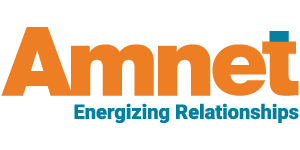[Approximate Reading Time : 4 mins]
When COVID-19 morphed into a full-blow pandemic, people had no other option but to stay indoors and continue their learning and research. They had to rely on online content, and the publishing industry had to undergo dramatic changes to accommodate the need for reliable data resources. It is safe to say that publishers have responded to this requirement with empathy, speed, and flexibility.
One major issue was off-site access in libraries and institutions. While the physical structures remained closed, users were given access to digital content without user limits and off-campus authentications. Publishers were quick to respond and also offered extended licenses. The Copyright Clearance Center of USA announced the Education Continuity License, which was put into effect till August 2020.
Publishers like Wiley and SAGE canceled print copies, and many others, in order to avoid unnecessary risk during the pandemic, reported printing delays. This may lead to a switch to digital formats. Several publisher events like the ALPSP conference have been made virtual but have attracted more crowds than usual. This pandemic became an opportunity to establish online events, webinars, and virtual sessions as the norm.
There has been an increasing demand for educational books (32 percent higher than normal). Journals like Emerald have provided funding options to cover the APCs of their open-access journals. Publishers were under pressure to fast-track articles on the pandemic, which led to the formation of a coalition of several publishers who agreed to share reviews when articles were resubmitted elsewhere. To sustain credibility, this collaboration needs to be extended to copyright awareness and protection. Many publishers including Springer Nature have made COVID-19-related articles available for free to boost worldwide research. Due to time constraints, preprints have seen a surge in the past six months.
Researchers working on the pandemic are sharing preliminary results on preprint servers and websites, like physicists and mathematicians have done for decades. Cameron Neylon, a researcher on scholarly communications, Curtin University, Australia, commented:
If we think openness of communication is valuable in a crisis, it should surely be valuable in normal times as well.
Journals have published papers on coronavirus twice as quickly as other papers due to quicker peer review. PLOS and eLife have launched an initiative to create a pool of scientists to review papers on the pandemic. The need for speed has raised concerns about quality and may increase the number of errata and retractions or even open up the specter of the promotion of incorrect information. Scholarly publishers saw a massive influx of articles that required urgent attention. While they reported good turnovers, they also had a glimpse of a challenging future.
This pandemic will continue to effect changes in the publishing industry due to the economic hiatus. The reality has reconfigured the key pillars of publishing, and it is important to evaluate; plan; and anticipate financial, economic, and sociocultural emergencies for resilience in the future.
Find out how Amnet can help you in scholarly publishing.
Our professionals can help you overcome challenges across all channels and reduce the costs of publishing without cutting corners.
Sources1. https://onlinelibrary.wiley.com/doi/10.1002/leap.1314.
2. https://www.nature.com/articles/d41586-020-01520-4.


